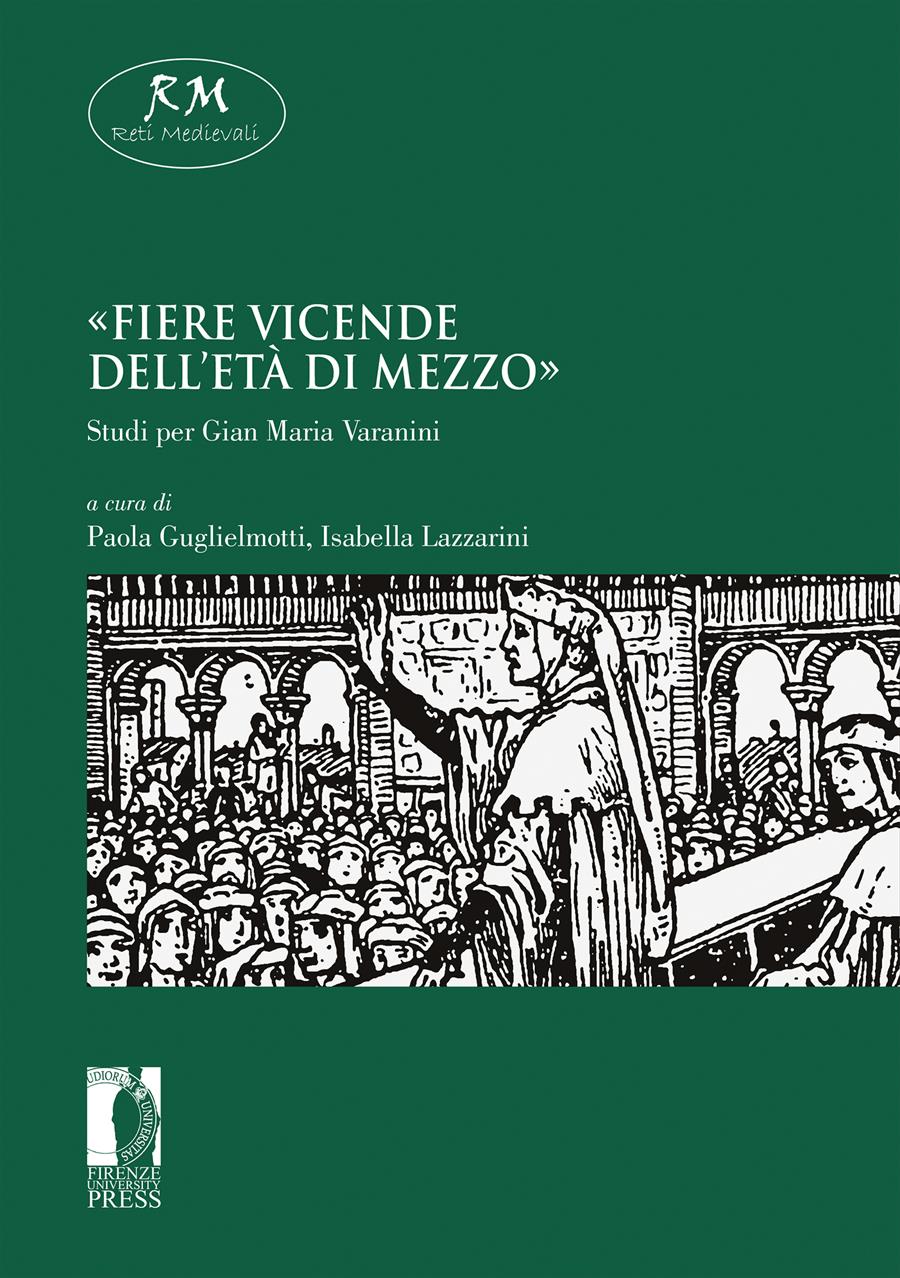- «Fiere vicende dell’età di mezzo»
- Edited by Paola Guglielmotti, Isabella Lazzarini
I Doria e la chiesa di San Matteo a Genova nella seconda metà del Duecento
- Paola Guglielmotti
- © 2021 Author(s) |
- CC BY 4.0
- DOI: 10.36253/978-88-5518-423-6.10
The essay addresses the problem of the relationship between large aristocratic families and “noble parishes” in Genoa, by considering the case of the Doria and the church of San Matteo, founded in 1125 and whose reconstruction was planned in 1278. On the one hand, three qualifying aspects of the Doria kinship are examined in order to understand the role of the small church in enhancing the coordination of the group: i.e., positions of leadership and command in the maritime city and in its government; dispersion and presence outside Genoa; numerical strength, residence and leadership. On the other hand, the article considers the insertion of San Matteo in the monastic network (not only in Liguria) headed by the abbey of San Fruttuoso, and how its reconstruction allowed for the diversification of the large family internal and external relevance. The conclusion, thanks to the comparison with the experiences of other important urban families, shows the uniqueness of this case study and how broader and more systematic comparisons should be made, even outside the Genoese context.
- Keywords:
- Middle Ages; 13th century; Genoa; Liguria; San Matteo church; San Fruttuoso abbey; social élite; Doria; families; alberghi.,
University of Genoa, Italy - ORCID: 0000-0002-5051-403X
Chapter Information
Chapter Title
I Doria e la chiesa di San Matteo a Genova nella seconda metà del Duecento
Authors
Paola Guglielmotti
Language
Italian
DOI
10.36253/978-88-5518-423-6.10
Peer Reviewed
Publication Year
2021
Copyright Information
© 2021 Author(s)
Content License
Metadata License
Bibliographic Information
Book Title
«Fiere vicende dell’età di mezzo»
Book Subtitle
Studi per Gian Maria Varanini
Editors
Paola Guglielmotti, Isabella Lazzarini
Peer Reviewed
Number of Pages
344
Publication Year
2021
Copyright Information
© 2021 Author(s)
Content License
Metadata License
Publisher Name
Firenze University Press
DOI
10.36253/978-88-5518-423-6
ISBN Print
978-88-5518-422-9
eISBN (pdf)
978-88-5518-423-6
eISBN (xml)
978-88-5518-425-0
Series Title
Reti Medievali E-Book
Series ISSN
2704-6362
Series E-ISSN
2704-6079
